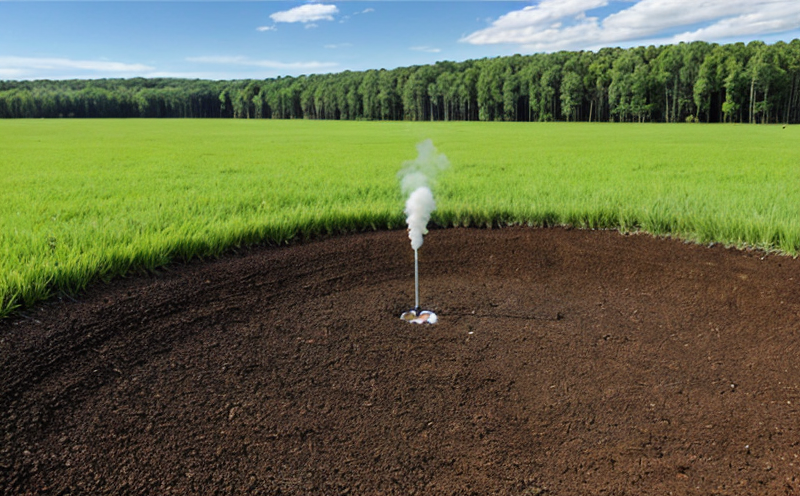EPA 200.7 Trace Elements in Mining Wastewater by ICP OES Testing
The Environmental Protection Agency (EPA) Method 200.7 is a widely recognized standard for the determination of trace elements in wastewater, particularly relevant to industries with significant environmental impact such as mining. This method utilizes Inductively Coupled Plasma Optical Emission Spectroscopy (ICP-OES), which offers high sensitivity and precision for detecting low-level concentrations of metals. This service ensures regulatory compliance by providing accurate analysis tailored specifically for the mining sector.
The EPA 200.7 protocol is designed to measure a wide range of trace elements, including but not limited to arsenic (As), cadmium (Cd), chromium (Cr), copper (Cu), lead (Pb), mercury (Hg), nickel (Ni), selenium (Se), and zinc (Zn). These elements are critical in assessing the environmental impact of mining operations. The presence of these trace elements can have severe consequences for aquatic ecosystems, human health, and surrounding communities.
Our laboratory employs rigorous quality control measures to ensure that every sample is handled with precision and care. From sample collection to final analysis, our team adheres strictly to EPA 200.7 guidelines ensuring accurate results. Our expertise lies in delivering reliable data that can be used for decision-making processes related to environmental protection.
Regulatory bodies like the EPA require compliance testing to ensure that industrial processes do not exceed allowable limits set forth by law. By offering this service, we help mining companies stay compliant with these regulations while also providing valuable insights into their operational practices. This information can be used internally for continuous improvement efforts or externally when reporting results.
The importance of accurate and timely testing cannot be overstated. Early detection of problematic levels allows for prompt corrective actions which prevent potential environmental damage and costly penalties associated with non-compliance. Our commitment to excellence ensures that you receive not just numbers, but actionable intelligence that can drive positive change within your organization.
Our methodology follows strict protocols outlined in EPA 200.7, ensuring consistency across all tests conducted under this standard. We use state-of-the-art instrumentation including high-performance ICP-OES systems to achieve precise measurements of trace elements down to parts per billion (ppb) levels. The process typically involves several steps:
- Sample collection: Fresh samples are taken directly from the source.
- Preliminary analysis: Initial screening determines which elements need further investigation.
- Preparation: Samples undergo preparation techniques such as digestion to release bound metals into solution form.
- Analysis: Using ICP-OES, we measure trace element concentrations according to EPA 200.7 specifications.
- Data interpretation: Results are analyzed against established reference materials and compared with historical data.
This comprehensive approach guarantees accuracy and reliability in every test performed. Our experienced analysts provide detailed reports including raw data, calculated values, and interpretive comments, helping clients understand the implications of their findings.
Compliance is just one aspect of our service offering; we also offer extensive support for R&D projects aimed at reducing environmental impacts through innovative solutions. By leveraging advanced analytical techniques like EPA 200.7 ICP-OES testing, researchers can identify areas where improvements are needed and develop strategies to address them effectively.
As a leader in environmental testing services, we pride ourselves on providing exceptional support throughout the entire testing process—from initial consultation through final report delivery. Our goal is to ensure that clients have access to high-quality data they can trust when making important decisions about their operations.
Customer Impact and Satisfaction
- Ensures compliance with EPA regulations, avoiding costly fines and legal issues.
- Aids in early detection of potential environmental concerns allowing for timely interventions.
- Provides valuable data for internal improvements aimed at reducing overall impact on the environment.
- Facilitates transparent communication between mining companies and regulatory authorities enhancing trust and credibility.
The positive feedback we receive from satisfied clients attests to our commitment to excellence. Their success stories are a testament to the reliability and accuracy of our testing services. By partnering with us, you're investing in sustainable practices that benefit both your business and the environment.
Environmental and Sustainability Contributions
The results from EPA 200.7 trace elements analysis play a crucial role in environmental stewardship efforts. By identifying problematic levels of metals early, mining companies can implement corrective measures to minimize their ecological footprint. This proactive approach helps protect aquatic life, reduces risks to human health, and promotes responsible resource management.
Our service contributes significantly to global sustainability goals by providing actionable intelligence that drives positive change within the industry. Through accurate testing and interpretation of data, we support mining companies in making informed decisions about their operations, ultimately leading towards more sustainable practices.
Use Cases and Application Examples
The application of EPA 200.7 trace elements analysis extends beyond mere compliance; it offers practical benefits for various stakeholders involved in the mining industry:
- Quality Managers: Use the data to monitor process efficiency, identify areas for improvement, and ensure product quality.
- Compliance Officers: Rely on accurate test results to demonstrate adherence to regulatory requirements, thereby reducing risks of non-compliance.
- R&D Engineers: Leverage the insights gained from testing to innovate new processes that reduce environmental impacts while maintaining productivity.
- Procurement: Utilize the information provided by these tests when selecting suppliers or vendors who adhere to strict environmental standards.
In summary, EPA 200.7 trace elements analysis is an indispensable tool for any organization seeking to operate responsibly and sustainably within today’s regulatory landscape.





